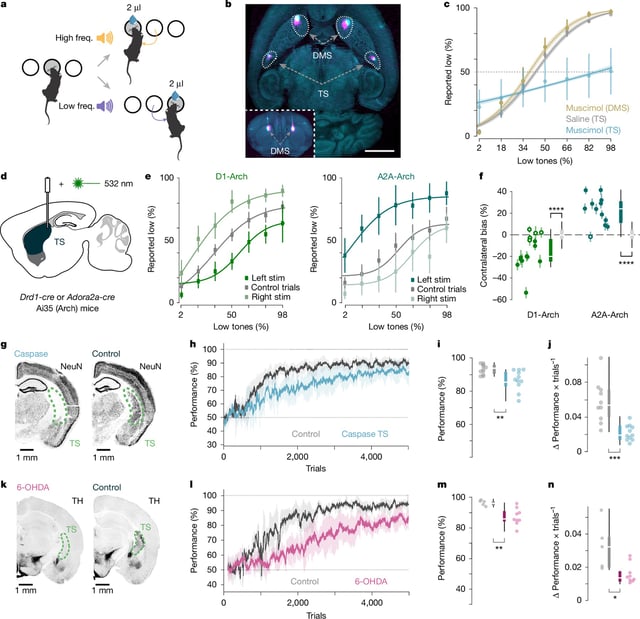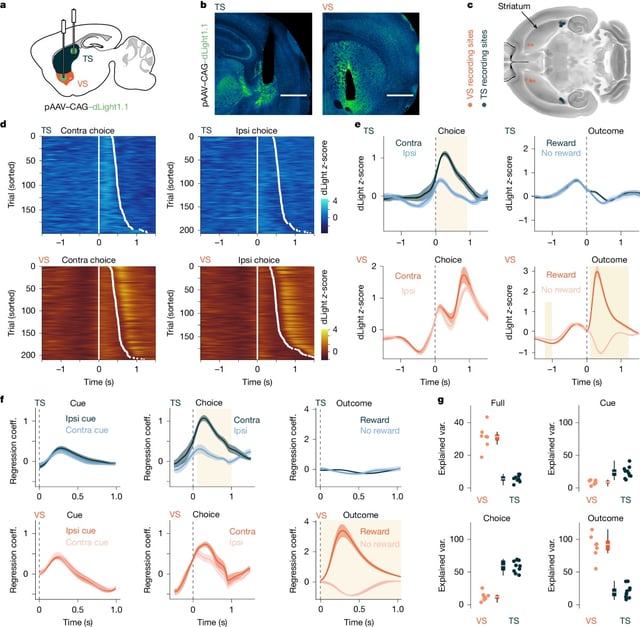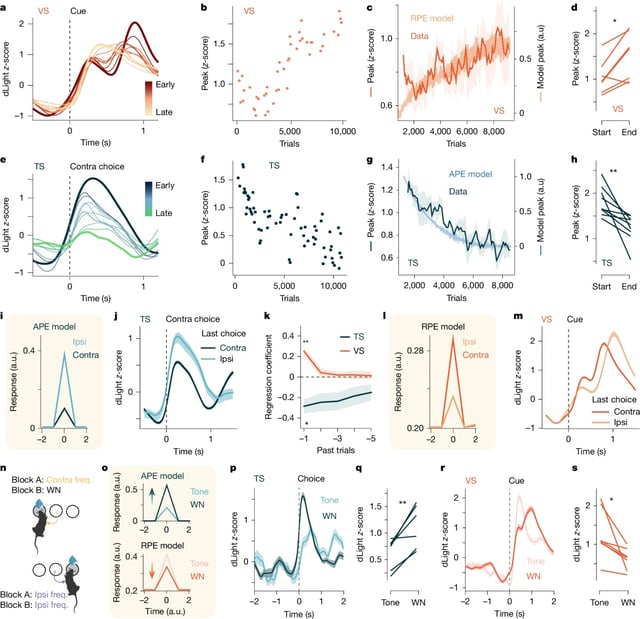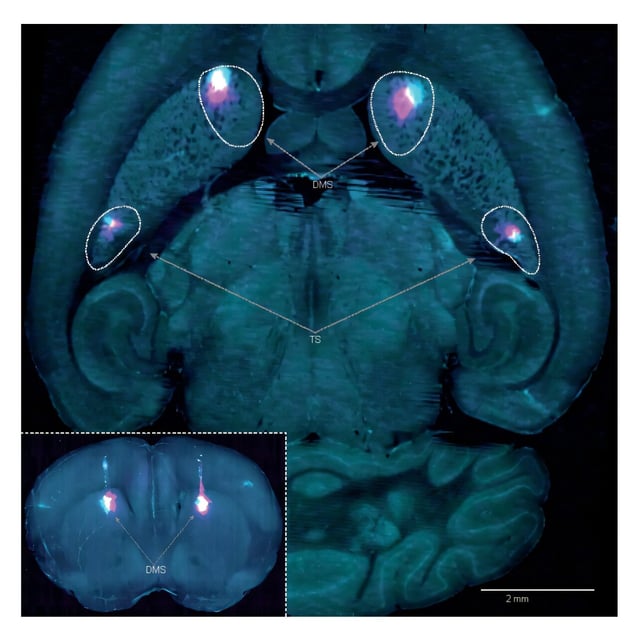Overview
- Scientists at the Sainsbury Wellcome Centre uncovered a second dopamine-driven teaching signal, action prediction error (APE), which operates alongside the known reward prediction error (RPE).
- APE, localized in the tail of the striatum, drives habitual behavior by encoding the frequency of actions, while RPE focuses on value-based decision-making.
- Mouse experiments revealed that silencing the tail of the striatum disrupts the transition to habitual, expert performance, confirming APE's critical role in habit learning.
- The findings suggest new therapeutic targets for treating addiction and compulsive disorders by focusing on the tail of the striatum.
- Preliminary links between APE and Parkinson’s disease propose that the loss of movement-related dopamine neurons may explain deficits in habitual behaviors observed in the condition.



